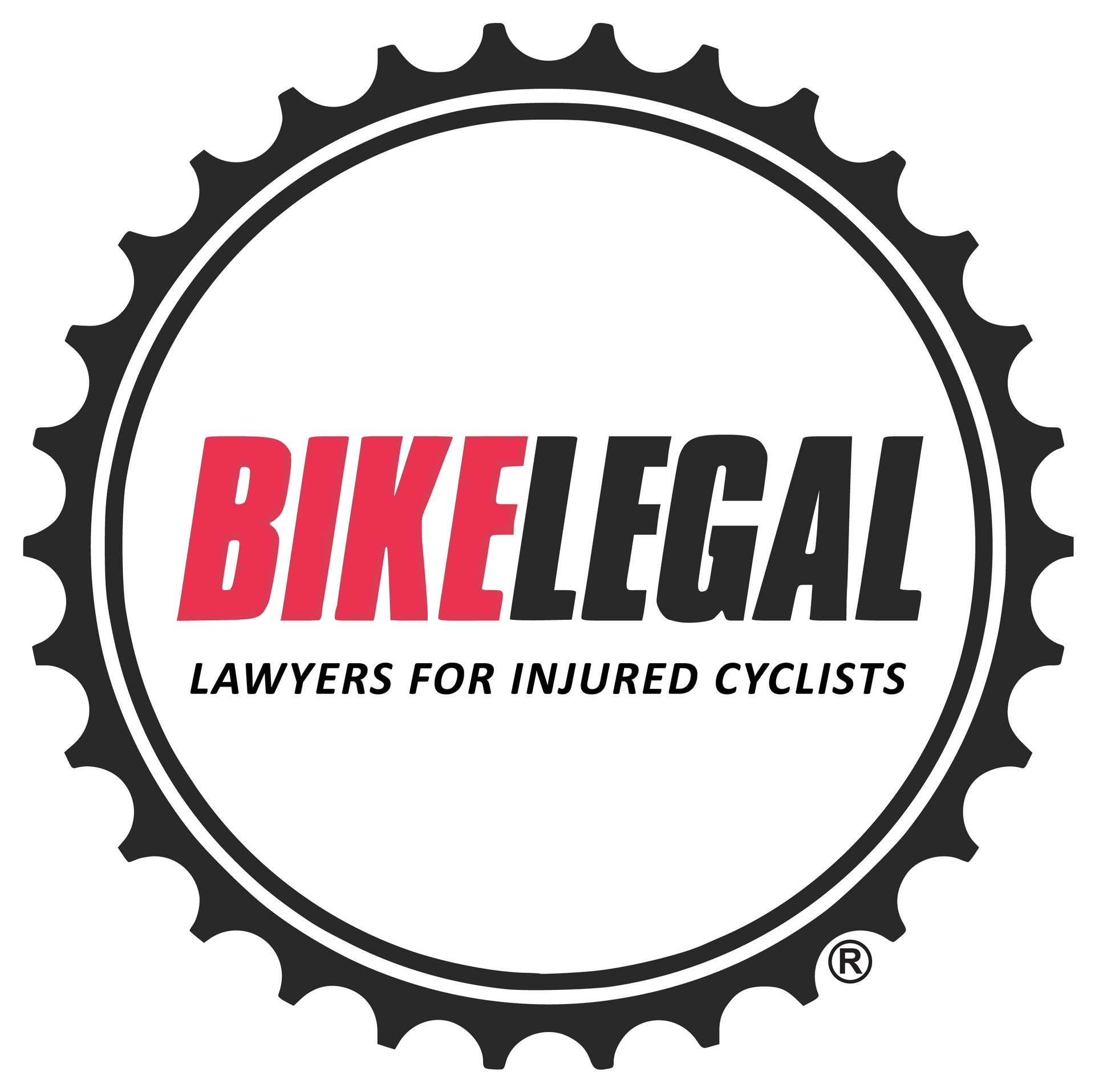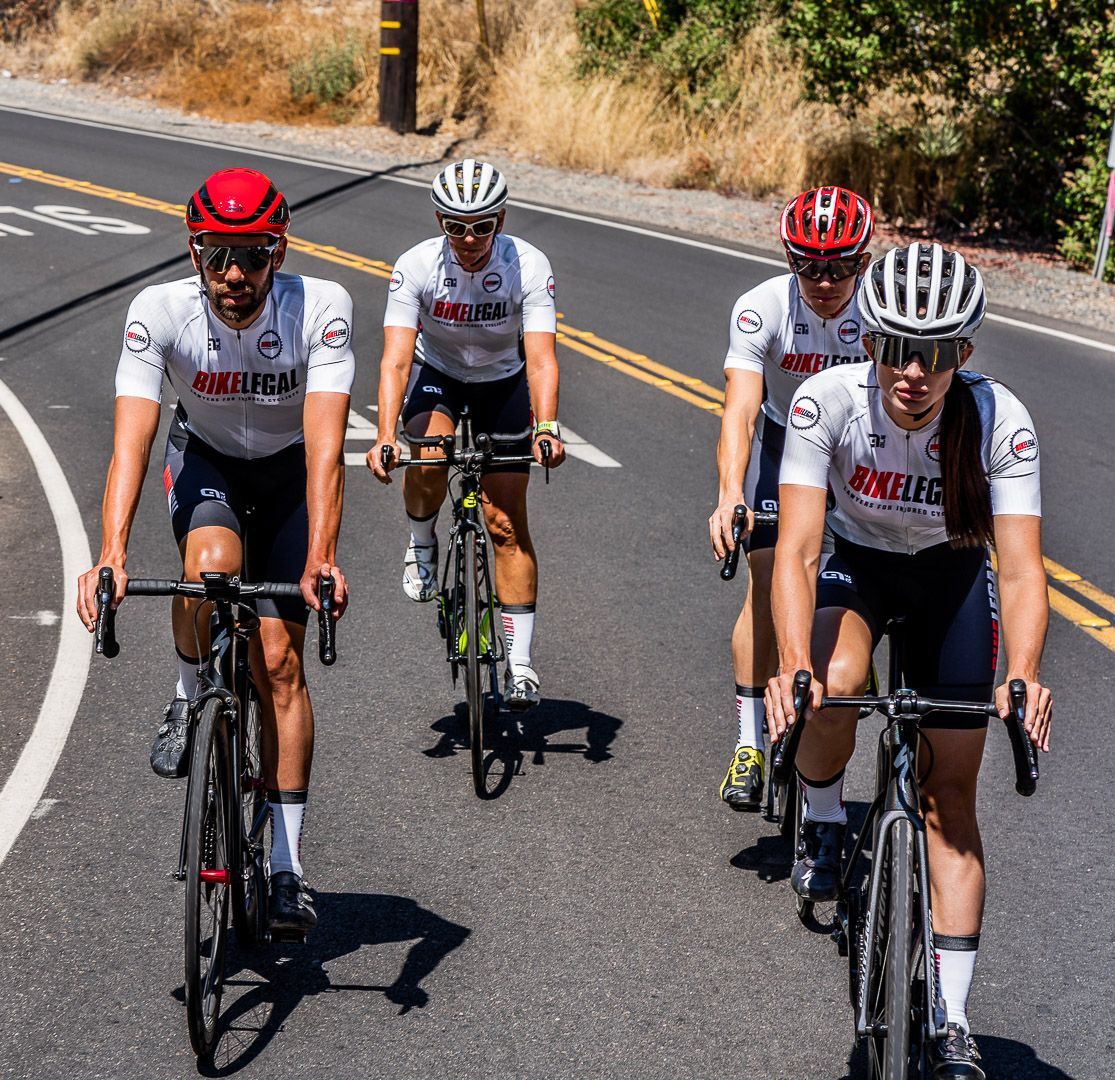The Most Common Dangers of Cycling on the Road & How to Navigate Them
Follow us on
social media!
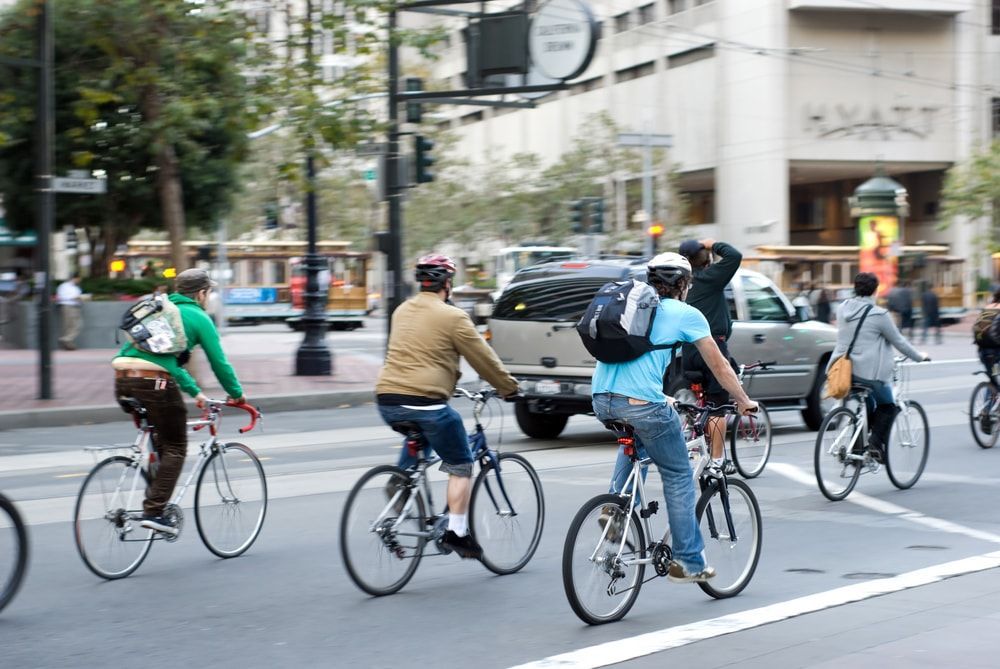
Think you know how to stay safe on the road as a cyclist? Think again. Even the most experienced riders can fall victim to a devastating accident. Thousands of cyclists are injured each year in collisions with vehicles. But that doesn't mean you have to live in fear.
With the right knowledge and strategies, you can significantly reduce your risk. We'll cover everything you need to stay safe on the road, including:
- The most common dangers cyclists face
- Essential safety gear that could save your life
- Your legal rights as a cyclist and how to protect them
- Preventive measures to avoid accidents
- Tips for safe, confident road cycling
What is Road Cycling?
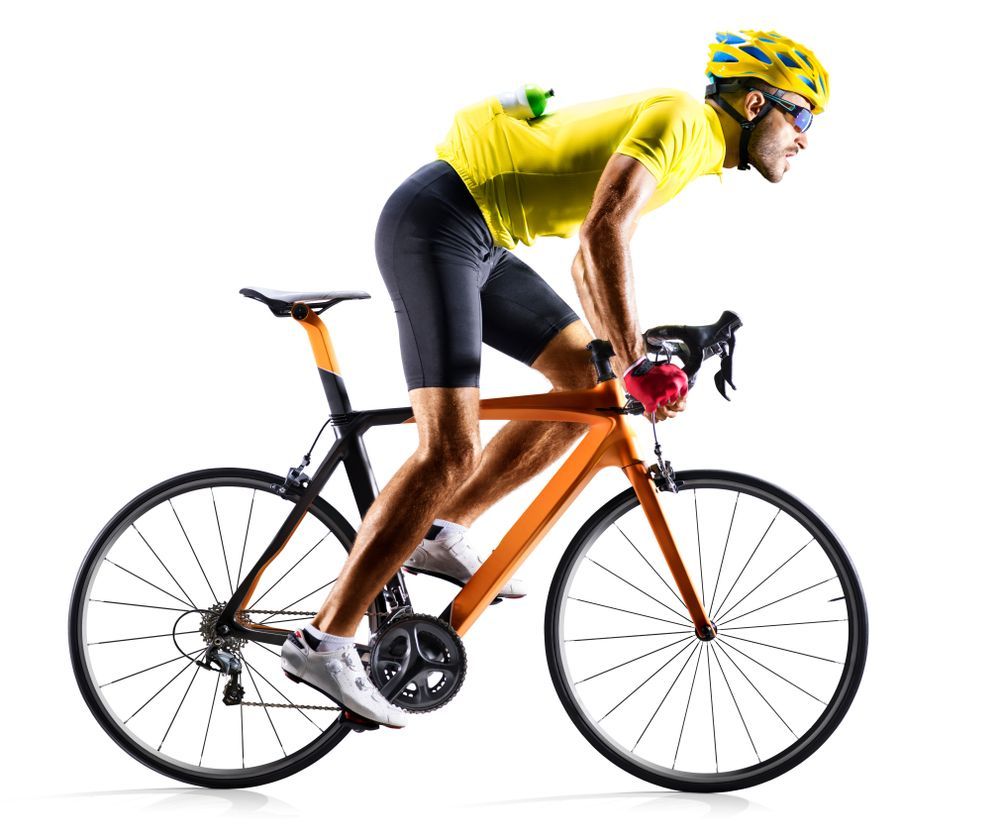
Road cycling is all about speed, distance, and the thrill of riding on paved surfaces. Here's what sets it apart:
- The Bike: Road bikes are built for efficiency. They're lightweight, with sleek frames and skinny tires designed to cut through the wind. Drop handlebars offer multiple hand positions for powerful pedaling and control.
- The Terrain: You'll find road cyclists on pavement, often on city streets, and scenic country roads – anywhere there's a smooth, paved path.
- The Focus: Road cycling can be competitive (think Tour de France), a social activity with cycling groups, or a solo way to clock miles and boost fitness.
How Does It Differ?
- Mountain Biking: This is for tackling rugged trails, dirt paths, and obstacles. The bikes are heavier, with shock absorbers and knobby tires for grip.
- Recreational/Trail Cycling: This is the most casual form. Riders often stick to bike paths or low-traffic roads on bikes with wider tires and upright handlebars for comfort.
Why Road Cycling?
If you crave a heart-pumping workout, the challenge of distance rides, or the camaraderie of a peloton (that's the cyclist pack you see whizzing by), road cycling could be your perfect match.
Demographics of Road Cyclists
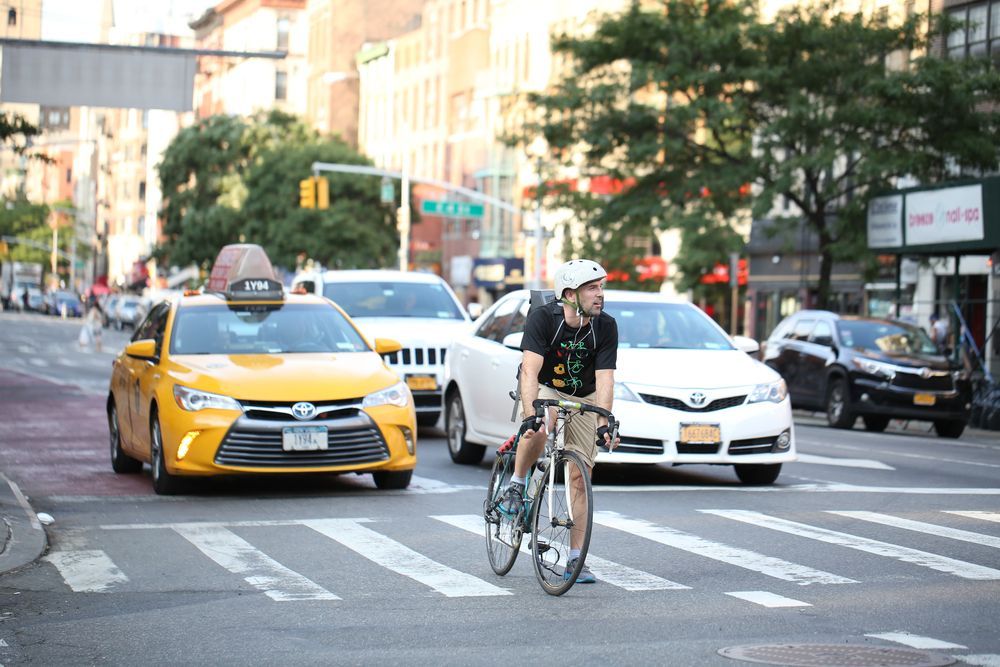
You might picture pro athletes in spandex when you think of road cycling, but the reality is far more diverse. Here's who you'll find sharing the asphalt:
- Commuters: Trading gridlock for two wheels, these folks embrace cycling as a healthy and eco-friendly way to get to work. They often favor practical bikes with racks and panniers for carrying essentials.
- Fitness Enthusiasts: Drawn by the calorie burn and cardiovascular challenge, these riders hit the roads to improve their health, log miles, and maybe even train for races.
- Weekend Warriors: They balance busy lives with a passion for cycling, squeezing in long rides and group outings whenever possible.
- Professional Athletes: These elite riders make their living on the bike, pushing their limits in high-stakes competitions.
- Hobbyists: From retirees to casual enthusiasts, they find joy and community in the world of road cycling.
- Urban Couriers: A growing tribe, these speedy cyclists weave through city traffic, making deliveries with agility and efficiency.
Reasons for Choosing Road Cycling
Beyond the diverse groups who love it, there are compelling reasons why road cycling continues to grow in popularity:
- Health Powerhouse: Cycling delivers serious health benefits. It strengthens your heart, builds muscle, improves balance, boosts your mood, and can even help manage weight.
- Eco-Friendly Ride: Ditch the car and pedal your way to a smaller carbon footprint. Road cycling produces zero emissions, helping fight climate change one ride at a time.
- Economic Edge: Save on gas, parking, and car maintenance. While the initial investment in a road bike might be higher than some other forms of cycling, the long-term savings can be substantial.
- Urban Convenience: In congested cities, a bike can often be the fastest way to get around. You can zip past traffic jams, easily find parking (even a small rack will do), and explore your city from a fresh perspective.
- Community and Camaraderie: Road cycling fosters a strong sense of community. Join group rides, meet like-minded cyclists, and find support and motivation on your journey.
- The Thrill of the Ride: There's something undeniably exhilarating about pushing yourself on a road bike – the speed, the feeling of the wind in your hair, and the accomplishment of conquering a tough climb.
Whether it's for health, environmental concerns, practicality, or sheer enjoyment, road cycling offers a wealth of benefits that make it an appealing choice for many.
Dangers of Road Cycling
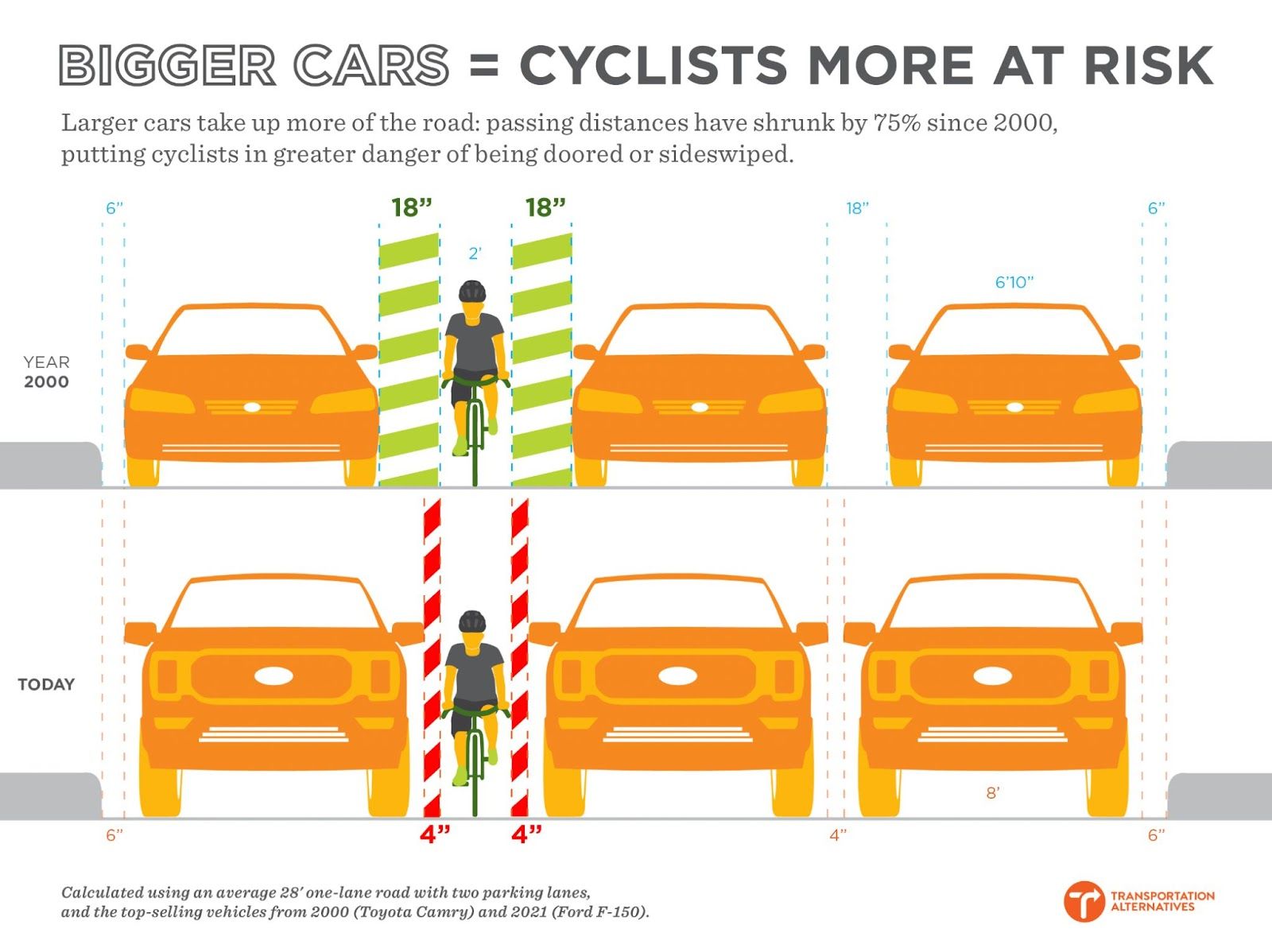
Road cycling comes with inherent risks. Here's a deep dive into the dangers cyclists face:
Sharing the Road with Vehicles
- Driver Behavior: Distracted driving, speeding, and aggressive behavior from motorists all pose serious threats to cyclists. Sadly, many drivers don't give cyclists the respect or space they deserve.
- Close Calls: Cars often pass too closely or cut off cyclists, leading to near-misses and collisions. This issue is worse in areas with narrow roads and limited bike infrastructure.
- Blind Spots: Trucks, buses, and large SUVs have significant blind spots where cyclists can easily disappear from view. This increases the risk, especially at intersections and when vehicles are turning.
- Reduced Lane Space: The increasing size of vehicles on the road poses significant dangers for cyclists. As cars and trucks grow larger, they occupy more of the available lane space, leaving less room for bicycles. Additionally, large vehicles create stronger air turbulence, which can destabilize a cyclist's balance increasing the likelihood of collisions.
- Dooring: A sudden hazard. Cyclists can be struck by car doors opening unexpectedly as they pass parked vehicles.
Road Conditions
- Potholes and Debris: A patch of broken pavement or unexpected objects in the road can throw a cyclist off balance, leading to crashes or forcing them to swerve into oncoming traffic.
- Slick Surfaces: Wet roads, leaves, metal grates, and construction zones can create dangerous conditions where tires lose traction.
- Poor Infrastructure: Many roads lack dedicated bike lanes or safe shoulders, forcing cyclists into the flow of heavy traffic and increasing their vulnerability.
Weather and Visibility
- Reduced Visibility: Rain, fog, snow, and low-light conditions make it harder for other drivers to see cyclists and for cyclists to see potential hazards.
- Unpredictable Weather: Sudden changes in weather can catch cyclists unprepared, leading to dangerous situations and increased risk.
- Extreme Temperatures: Heat exhaustion or hypothermia can impair a cyclist's judgment and reaction time, while strong winds can make it difficult to stay balanced.
Other Challenges
- Mechanical Issues: A flat tire, broken chain, or other bike malfunction can leave a cyclist stranded on a busy road.
- Theft: Road bikes can be attractive targets for thieves, especially in urban areas.
- Physical Overexertion: Pushing your limits too far without proper hydration, nutrition, or training can lead to fatigue, dizziness, and accidents.
The Importance of Awareness
Cyclists must stay alert to these many dangers. Practice defensive cycling, anticipate potential hazards, and always be prepared to act quickly to avoid a collision.
Statistics on Bicycle Injuries and Fatalities
The numbers paint a sobering picture of the risks cyclists face on the road. Here's a breakdown of key findings from the NHTSA (2022) and other sources:
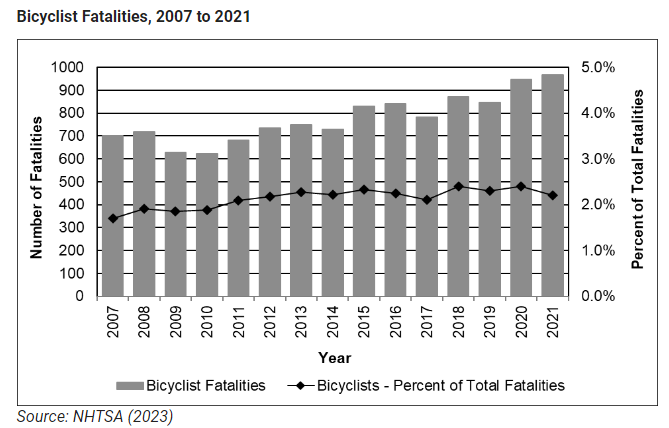
- 1,230 Total Cycling Fatalities: A tragic number highlighting the urgent need for improved safety measures.
- 853 Deaths in Motor Vehicle Crashes: The vast majority of cycling fatalities involve collisions with cars, trucks, and other vehicles.
- 377 Deaths in Other Incidents: This underscores that cyclists face dangers beyond traffic, including falls and other accidents.
- 2.5% Decrease in Deaths: While a positive sign, it doesn't diminish the overall crisis.
- 37% Increase in Deaths Over 10 Years: This alarming trend shows the problem is worsening, not improving.
Other Key Statistics
- The Seasonal Danger: Fatalities peak in summer and early fall, likely due to increased ridership and driver complacency in good weather.
- 2019 Non-Fatal Injury Decline: While the 40% decrease is encouraging, it highlights that even non-fatal accidents can have life-altering consequences.
- The Age Factor: The average age of 47 for cyclists killed in motor vehicle crashes suggests that even experienced riders are incredibly vulnerable.
- Gender Disparity: Men are disproportionately impacted by cycling fatalities due to the fact that more men ride in traffic than women.
What does this mean?
These statistics aren't just numbers. They represent real lives lost and families devastated. They underscore the need for:
- Better Infrastructure: Dedicated bike lanes, protected intersections, and improved road design can significantly reduce collisions.
- Driver Education: Motorists need to be taught to share the road safely and respect cyclists' rights.
- Cyclist Awareness Campaigns: Promoting helmet use, defensive cycling techniques, and the use of lights and reflective gear can help cyclists stay safer.
It's important to note that data collection methods can vary, so there might be some discrepancies across sources.
Also Read: How Bicycle Accidents Can Lead To Traumatic Brain Injuries
Most Common Types of Bicycle Accidents on the Road
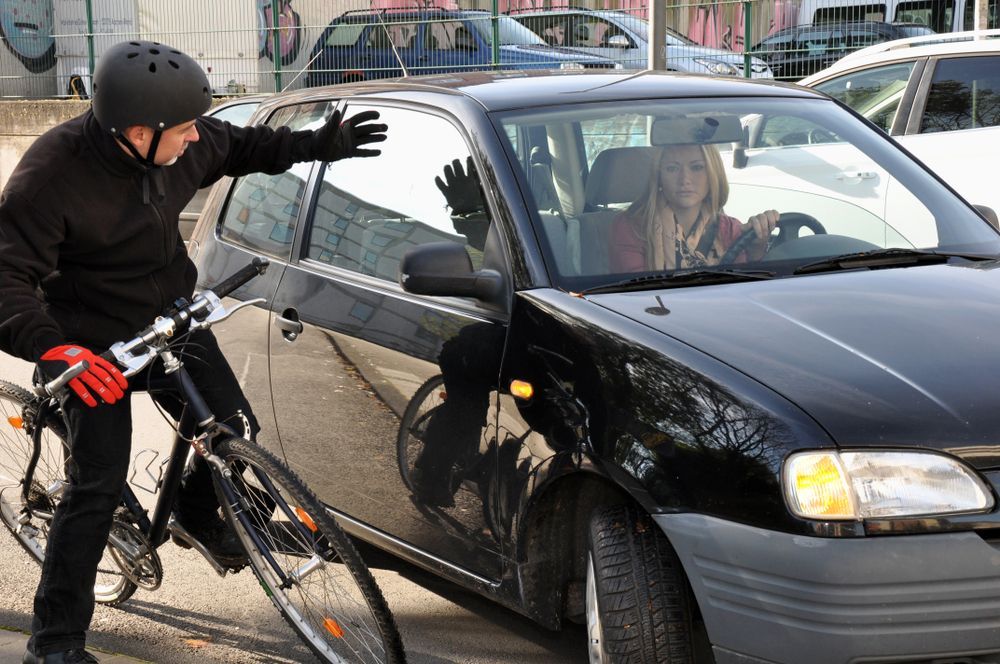
Sadly, cyclist accidents come in many dangerous forms. Let's break down the most prevalent categories:
Collisions with Vehicles
- Right Hook: A vehicle turning right directly in front of a cyclist traveling straight through an intersection. This leaves the cyclist with little time to react.
- Left Cross: A vehicle turns left across a cyclist's path, often misjudging the cyclist's speed or failing to see them at all.
- Rear-End: A vehicle strikes a cyclist from behind, frequently when traffic slows suddenly, or the driver is distracted.
- Sideswipe: A vehicle passing too closely "clips" a cyclist, causing them to swerve, fall, or collide with something else.
- Intersection Hazards: Intersections are hotspots for accidents. Miscommunication, blind spots, and right-of-way disputes can lead to dangerous collisions.
Dooring
A sudden and unexpected danger. Here's how it goes:
- The Surprise: A driver or passenger opens a car door directly in the path of an oncoming cyclist, who lacks the time or space to avoid a collision.
- The Impact: Doorings often cause cyclists to be thrown from their bikes, leading to severe injuries.
Road Defects
These seemingly small hazards can have big consequences:
- Potholes: Hitting a pothole can throw a cyclist off balance or cause a tire to blow, potentially sending them into traffic.
- Debris: Construction material, broken glass, or objects in the road can force cyclists to swerve or cause punctures and falls.
- Surface Hazards: Wet leaves, gravel patches, and metal grates can create slippery conditions leading to sudden loss of control.
- Poor Road Design: Cracks, narrow shoulders, and unexpected obstacles force cyclists into dangerous situations and increase their risk of a crash.
Key Takeaways
- Cyclists are most vulnerable to collisions with vehicles. Learning to anticipate driver behavior and navigate common hazardous scenarios is crucial.
- Dooring highlights the importance of awareness. Staying aware in urban environments can make the difference between a safe ride and a devastating accident.
- Road conditions matter. Cyclists must remain vigilant, especially when riding on poorly maintained roads or in areas with construction zones.
Must Read: 20 Types of Bicycle Accidents & Prevention Tips
Safety Gear for Road Cyclists: Essentials and Best Practices
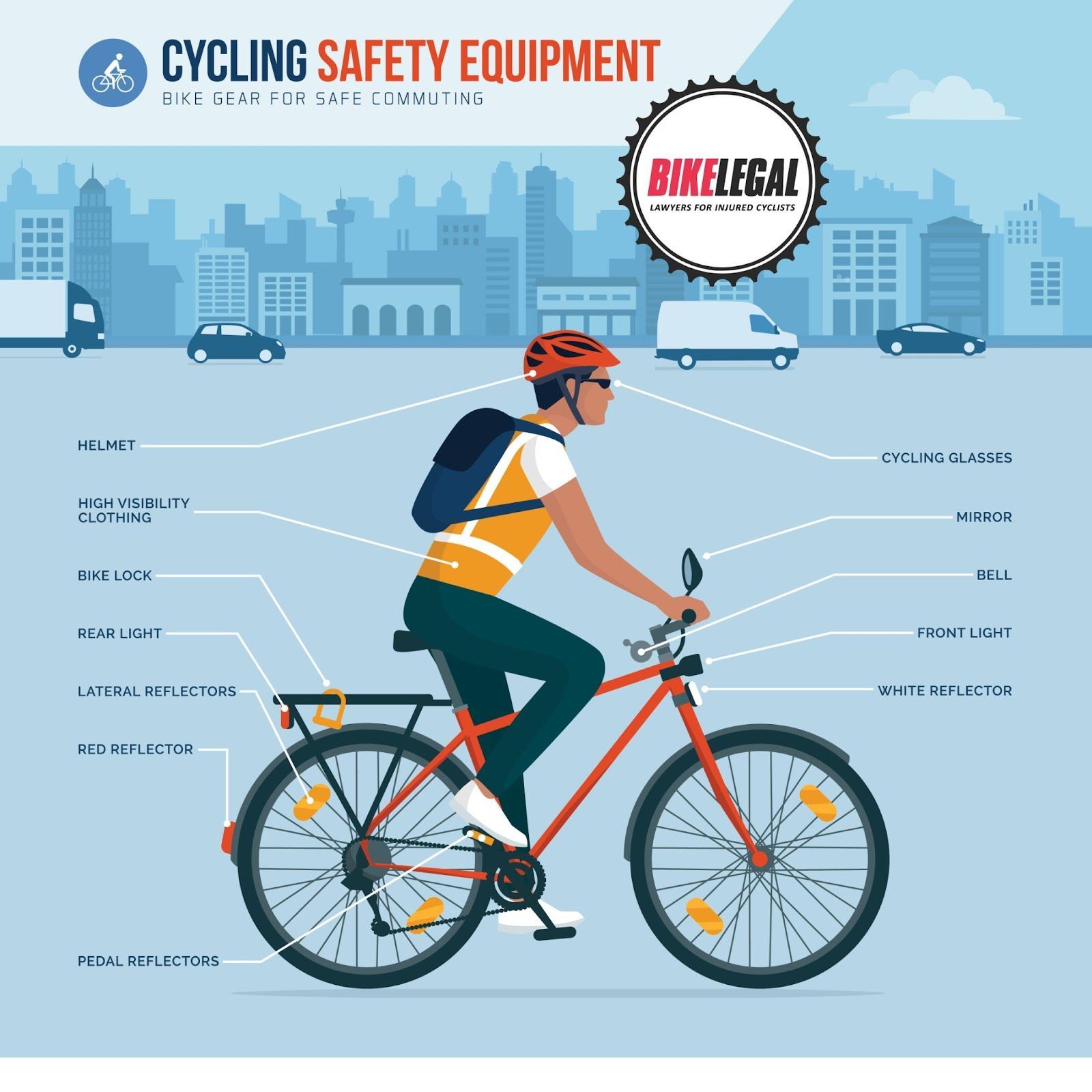
Investing in the right gear is a crucial step in protecting yourself on the road. Here's the breakdown, including the latest safety recommendations:
The Non-Negotiables
- Helmet: The most critical piece of safety gear. Always choose a helmet that fits properly and meets safety standards (you'll often see a CPSC sticker, which stands for the Consumer Product Safety Commission). Research is increasingly exploring advanced helmet technology like MIPS, which adds a layer within the helmet to reduce the rotational force of certain impacts.
- Lights: Front and rear lights are essential for visibility, even during daytime rides. Look for bright, flashing modes to grab drivers' attention.
- Reflective Clothing: High-visibility vests, jerseys, and leg bands dramatically increase your visibility, especially in low-light conditions.
Best Practices
- Choose Comfort and Fit: The gear you'll actually wear is always the best option. Make sure your helmet is snug but not tight, and your clothes are comfortable for all-day riding.
- Bright Colors: Opt for bright, eye-catching colors whenever possible, further enhancing your visibility.
- Consider a Mirror: A handlebar or helmet-mounted mirror can help you see traffic approaching from behind, increasing your awareness and reaction time.
- Ride Predictably: Follow traffic rules, signal your turns, and ride in a straight line – this helps drivers anticipate your movements.
Additional Gear to Consider
- Gloves: Padded gloves protect your hands in a fall and increase grip for better control.
- Eyewear: Sunglasses shield your eyes from sun glare, wind, and debris.
- Bell: A courteous ring can alert pedestrians and other trail users to your presence.
- Bike Computer with GPS: If you get lost or need help, GPS can be a lifesaver. Certain models also have built-in crash detection that can notify emergency contacts.
- Bicycle Cameras: There are several types of front and rear cameras that record your ride. This data is very useful in the event of an accident.
- Radar: This technology alerts the rider of approaching traffic from behind.
Beyond Just the Gear
- Maintenance Matters: A well-maintained bike is safer. Regularly check tire pressure, brake pads, and gears.
- Know the Rules: Familiarize yourself with traffic laws and cycling-specific regulations in your area.
- Stay Alert: Avoid distractions like headphones, and stay focused on scanning for potential hazards.
Safety gear minimizes risk, but it doesn't eliminate it. Defensive cycling and situational awareness are your most powerful tools.
Bicycle Travelways and Infrastructure: The Spectrum of Safety
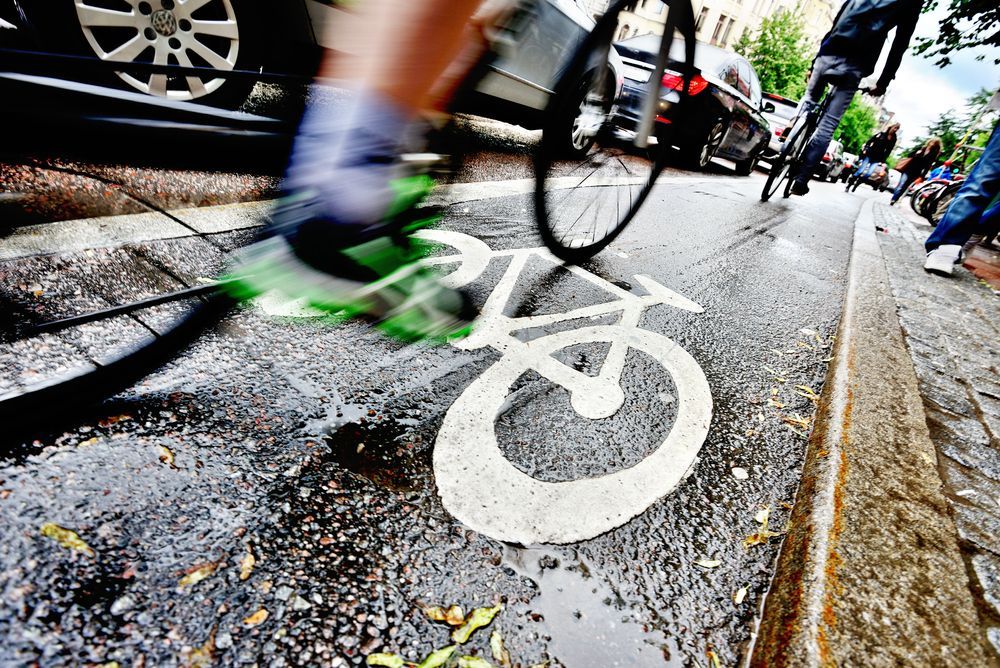
The types of bicycle lanes play a huge role in cyclist safety and comfort. Here's a breakdown from the most protective to the least:
Safest: Dedicated, Protected Infrastructure
- Cycle Tracks/Separated Bike Lanes: Physically separated from traffic with barriers like curbs, barriers, planters, or parked cars. These offer the highest level of protection and comfort.
- Bike Paths: Paved trails completely off-road for cyclists and often pedestrians. No interaction with motor vehicles makes them extremely safe.
Moderately Safe: Designated Bike Lanes
- Buffered Bike Lanes: Painted lanes with a buffer zone (often marked with stripes or small posts) separating cyclists from traffic. These offer some protection but are not as secure as physically separated lanes.
- Conventional Bike Lanes: Simple painted lines marking a cyclist's space. These provide some awareness, but drivers often encroach on them.
Least Safe: When Lanes Get Sketchy
- Advisory Bike Lanes: Marked with "sharrows" (shared lane arrows), these only suggest where cyclists should ride. Drivers aren't obligated to respect them, offering minimal protection.
- No Bike Path: This means cyclists share the road with traffic, relying entirely on driver awareness and safe passing distance. It's the most vulnerable situation.
Trends and Innovations
- The Protected Lane Boom: Cities are increasingly adopting protected bike lanes and cycle tracks, recognizing their safety and ridership benefits.
- Green Lanes: These vibrantly colored bike lanes add a powerful visual cue, increasing driver awareness and compliance.
- Smart Technology: Some cities are experimenting with sensors to detect cyclists and adjust traffic signals accordingly, minimizing wait times and conflict points.
Enhancements at Intersections to Keep Cyclists Safe
- Bike Boxes: These are designated areas at the front of traffic lanes where cyclists can wait for the light to change, giving them a head start and making them more visible to drivers.
- Dedicated bike signals: These traffic lights are specifically for cyclists, providing them with a separate phase to move through intersections safely, reducing conflicts with turning vehicles.
- Protected intersections: These designs include physical barriers or raised curbs that separate cyclists from motor vehicles, providing a safer and more intuitive way to navigate intersections.
- Advanced stop lines: which are positioned ahead of the general stop line for vehicles. This creates a space for cyclists to wait safely and increases their visibility to drivers.
Key Takeaways
- Dedicated cycling infrastructure significantly increases safety and encourages more people to try cycling.
- Pushing for better infrastructure in your community can make a real difference – get involved with local advocacy groups.
- Even with protected lanes, cyclists need to stay alert, but the inherent risk is significantly lower.
Common Bicycle Laws: Understanding the Rules of the Road
Knowing cycling-specific laws is crucial for your safety and to avoid potential fines. While regulations vary by state, here's a general overview and how laws shape cyclist behavior:
Cyclists as Vehicles (With Important Exceptions)
In most jurisdictions, cyclists are considered vehicles with largely the same rights and responsibilities as drivers. This means:
- Obey Traffic Laws: Cyclists must follow stop signs, traffic lights, yield signs, etc.
- Ride with the Flow: Cyclists generally need to ride in the same direction as traffic, not the opposite direction.
- Rules for Turns: Use appropriate hand signals to indicate turns and lane changes.
- Exceptions: States may allow cyclists to ride on sidewalks under certain circumstances (often age-dependent), pass on the right in specific situations, or make rolling stops at specific intersections.
Common Laws for Cyclists
- Helmet Laws: These vary significantly by state and often apply only to young riders. Check your local regulations.
- Lights and Reflectors: Most states require a front headlight and a rear reflector for night riding.
- Sidewalk Riding: Often restricted in business districts or depending on a rider's age.
- Bike Lane Usage: Rules vary, but cyclists are often required to use bike lanes where available, with exceptions for safety reasons (like debris or parked cars in the lane).
Common Laws for Motorists
- Passing Distance: The "Three Feet Law," present in many states, requires drivers to give cyclists a minimum clearance when passing. Specific distances vary.
- Right-of-Way: Drivers should yield to cyclists in the same way they would other vehicles, especially at intersections.
- Distracted Driving: Laws against phone use and other distractions while driving help protect cyclists from inattentive motorists.
How Laws Influence Behavior
- Cyclist Awareness: Knowing the rules promotes safer riding practices, helping cyclists anticipate traffic flow and make themselves more visible.
- Driver Responsibility: Laws around passing distance and yielding help educate drivers on how to share the road safely.
- Advocacy: Understanding local laws empowers cyclists to advocate for stronger protections and better infrastructure.
Always check your state and city ordinances for specific regulations.
Preventing Bicycle Accidents: Tips and Strategies
While we can't control the actions of others, there's a lot of cyclists can do to minimize their risk on the road. Here's your action plan:
Safety Tips for Cyclists
- Be Visible as Possible: Bright clothing, lights (day and night), and reflective gear are your biggest allies.
- Signal Clearly: Use standard, confident hand signals to communicate your intentions to drivers. Here's a quick refresher:
- Left Turn: Left arm straight out to the side.
- Right Turn: Right arm straight out, or left arm bent at the elbow with hand pointing up.
- Stopping: Either arm bent at the elbow, hand pointing down.
- Own Your Lane: In the absence of a bike lane, riding a safe distance from the curb discourages cars from squeezing past dangerously.
- Scan and Anticipate: Stay alert – look for potential hazards, and try to predict driver behavior.
- Assume You're Invisible: Even if you think a driver sees you, proceed with caution and be ready to react.
- Know Your Rights: Understanding traffic laws empowers you to ride confidently and make drivers aware of your space on the road.
- Choose Routes Wisely: Whenever possible, opt for roads with bike lanes, wide shoulders, or lower traffic volume.
- Ride Defensively: Don't get complacent – be prepared for the unexpected and always have an escape route in mind.
Educational Campaigns for Cycle Drivers and Other Motorists
- Share the Road: Public awareness campaigns remind drivers (just like car drivers) that cyclists have equal rights to the road.
- Safe Passing Distance: Emphasize specific laws and highlight the dangers of passing too closely.
- Blind Spot Awareness: Campaigns focusing on truck and bus blind spots can save lives.
- The Importance of Checking: Underscore the necessity of looking twice for cyclists before turning or opening car doors.
Additional Tips
- Take a Skills Class: Learn proper techniques for handling your bike, navigating traffic, and emergency maneuvers.
- Ride in Groups: There's safety in numbers, plus it increases your visibility.
- Maintenance Matters: A well-maintained bike is less likely to leave you stranded with a mechanical issue in a dangerous situation.
It takes a two-way effort: Both cyclists and drivers need to share the responsibility for road safety.
Post-Accident Actions: What to Do If You're in a Cycling Crash
Even the most cautious cyclists can be involved in accidents. Here's a step-by-step guide on how to handle the aftermath in a way that protects your rights and well-being:
Immediate Priorities
- Assess Injuries: Check yourself and others involved for injuries. If serious, call 911 immediately.
- Exchange Information: Even for minor accidents, get the following from the driver (if involved):
- Name and contact information
- Driver's license and insurance details
- Vehicle registration and license plate number
3. Gather Evidence: This is crucial for protecting yourself.
- Photos and Video: Take pictures of the scene, damage to your bike and belongings, and any visible injuries.
- Witnesses: If people saw the accident, get their names and contact information.
- Police Report: For most accidents, it's wise to file a police report, even if injuries seem minor.
Important Reminders
- Stay Calm: Emotions run high after an accident, but focus on clear communication and documenting everything.
- Don't Admit Fault: Avoid saying "I'm sorry" to the driver, as this could be interpreted as an admission of guilt.
- Seek Medical Attention: Even if you feel okay initially, adrenaline can mask injuries. Get checked by a doctor, especially if you experience any pain later.
Subsequent Steps
- Insurance: Contact your insurance company promptly. They can guide you on the claims process and coverage.
- Legal Representation If the accident was serious or the other party is disputing fault, consider hiring a bicycle accident attorney. Bike Legal can help.
- Bike Repairs: Document damage to your bike and get estimates for repair or replacement.
- Document Everything: Keep a log of medical expenses, missed work due to injuries, and other related costs. Notes on the accident's impact on your life can also be important.
Key Things to Avoid
- Leaving the Scene: This can be considered a hit-and-run, even if you are injured.
- Signing Anything: Don't sign any documents from the other party's insurance company without legal advice.
- Ignoring Pain: Get medical attention, even for seemingly minor injuries. They can worsen over time.
Must Read: The Vulnerability of Cyclists - Why Bicycle Accidents Can Cause Severe Injuries
The Importance of a Quick Response:
Prompt action after an accident helps preserve evidence, protects your rights, and ensures you get the medical and legal support you need.
Need additional guidance or want to discuss your case? Contact Bike Legal for a free consultation.
Legal Representation for Bicycle Accidents: When It's Essential
While some minor incidents can be handled independently, there are situations where having a bicycle accident attorney is crucial for protecting your interests.
When to Consider a Bicycle Accident Attorney
- Injuries: If you've suffered injuries, medical expenses, lost wages, or long-term impairments, an attorney can fight for the maximum compensation you deserve.
- Disputed Liability: If the driver tries to blame you for the accident, a bicycle accident lawyer can build a strong case to prove their negligence.
- Insurance Company Issues: Insurance companies often try to minimize payouts. An attorney will handle negotiations and fight for fair compensation.
- Complex Cases: If the accident involved a commercial vehicle, hit-and-run, or other complicating factors, an experienced lawyer is your best bet for navigating the legal system.
- Peace of Mind: Dealing with the aftermath of an accident is stressful. An attorney handles the paperwork and legal battles, allowing you to focus on recovery.
The Role of Legal Representation in Accident Claims
A bicycle accident attorney will:
- Investigate the Accident: Gather evidence, obtain police reports, interview witnesses, and, if necessary, hire accident reconstruction experts.
- Assess Your Damages: Accurately calculate medical expenses, lost wages, pain and suffering, and any future costs associated with your injuries.
- Negotiate with Insurance Companies: Attorneys know the tactics insurance companies use and will push for the maximum possible settlement.
- File a Lawsuit: If a fair settlement can't be reached, your lawyer will be prepared to take your case to court.
- Protect Your Rights: Ensure you receive just compensation and are treated fairly throughout the process.
Why Choose a Bicycle-Focused Attorney?
Attorneys specializing in cycling accidents have a deep understanding of:
- Cycling-Specific Laws: They know the nuances of traffic laws and how they apply to cyclists.
- The Unique Nature of Cycling Injuries: They can effectively argue for damages that reflect the long-term impact these injuries often have.
- The Cycling Community: They might have connections to medical experts and a local bike shop for resources and support.
Don't gamble with your future. If you've been injured in a cycling accident, the team at Bike Legal is here to help. Contact us for a free consultation to discuss your case.
Must Read: When to Hire a Bicycle Accident Lawyer: 5 Signs You Need Legal Help
State-Specific Cycling Information: Where Safety Varies
Sadly, some states are consistently safer for cyclists than others. Here's a breakdown of factors and some resources to explore further:
Identifying the Safest and Most Dangerous States
Studies and organizations that track cycling safety often release rankings. Pay attention to the methodology as they consider different factors:
- League of American Bicyclists: Check out their "Bicycle Friendly States" rankings. They look at legislation, infrastructure, education, and more.
- National Highway Traffic Safety Administration (NHTSA): Look for their data on bicycle fatalities by state. This often reveals stark differences.
- Research Studies: These sometimes analyze specific factors like road design or helmet laws, providing further insights into state-by-state safety.
Key Factors Influencing Rankings
Infrastructure:
- States with extensive networks of protected bike lanes and cycle tracks generally have better safety records.
- Wide shoulders, a lower speed limit on specific roads, and cycle-friendly intersections make a big difference.
Laws:
- Strong "3-foot passing laws" and clear rules protecting cyclists' right-of-way contribute to safer environments.
- Helmet laws, especially for young riders, are correlated with lower head injury rates.
- Distracted driving laws and enforcement play a significant role in protecting all road users.
Where to Find Information?
- State DOT Websites: Search for your state's Department of Transportation website. They often have resources on cycling laws, safety tips, and infrastructure plans.
- Local Advocacy Groups: These organizations are a wealth of knowledge about conditions on the ground in your area.
FAQs: Quick Answers to Your Cycling Safety Questions
Is it dangerous to bike on the road?
Road cycling carries inherent risks, but they can be significantly reduced with proper precautions. Factors like infrastructure, traffic volume, and rider awareness all impact safety.
What is the most common bicycle accident?
Collisions with vehicles are the most prevalent type of cycling accident. Intersections are particularly dangerous hotspots.
What are the safety precautions for cyclists?
- Be Visible: Bright clothing, lights, and reflective gear are essential.
- Signal Clearly: Use hand signals to communicate your intentions.
- Ride Predictably: Follow traffic laws and maintain a consistent line.
- Anticipate Hazards: Scan for potential dangers and be prepared to react.
- Gear Up: Helmets, gloves, and proper shoes protect you in a fall.
How common are cycling accidents?
Unfortunately, thousands of cyclists are injured each year in the U.S. While serious accidents are a minority, even minor incidents can cause significant disruption.
What is the most common injury in road cycling?
- Abrasions (Road Rash): These painful scrapes are extremely common in falls.
- Bone Fractures: Collarbones, wrists, and other bones are vulnerable in crashes.
- Head Injuries: The reason helmets are essential, even in minor accidents.
Read Next:
